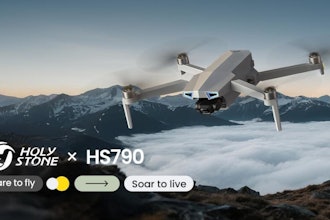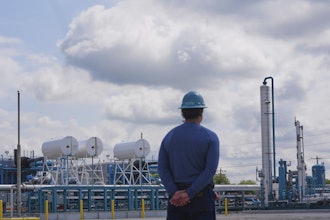Solar Glasses Power Your Temples
Researchers from Karlsrue Institute of Technology have created Solar Glasses that have semitransparent organic solar cells on their lenses that supply electric power to a microprocessor, two displays, and electronics in the temples.
Unlike silicon solar cells, organic cells are flexible, transparent, and lightweight. They can be made in many shapes, sizes, and colors, so the team made a set of semitransparent cells that were placed on the lenses. The lenses wound up about 1.6 mm thick, and weighed six grams, which is on par with typical sunglasses.
The glasses generate about 400 milliwatts of electric power, so you could plug them in to a hearing aid or pedometer, but they were really meant to serve more as a case study. The tech might be a bit more applicable in an all-glass office building, or perhaps even the smart windows on the Bloon pods.
Endoscope Arms Have Tentacle-Inspired Cups
Surgeons use flexible endoscopes to perform procedures on difficult-to-reach parts of the body.
The endoscopes typically use very rigid surgical tools to manipulate and remove tissue, which reduces a surgeon's dexterity and sensing. Harvard researchers may have developed a solution, a hybrid robotic arm that attaches to endoscopes. The arms have integrated sensing, flexibility, and multiple degrees of freedom — they even have a suction cup inspired by octopus tentacles to more carefully manipulate tissue.
The arm was built using a manufacturing technique based on pop-up fabrication and soft lithography. It lies flat on an endoscope until it arrives at the desired spot, then pops up before use.
It’s a similar pop-up fabrication technique that was used to make Mobee, the monolithic bee back in 2011.
Only Mobee used electricity, which wouldn't really work with your tissue, so the surgical arm forms using soft actuators powered by water.
In a recent test, the soft pop-up arm was used to work on a pig's stomach as a demonstration. It successfully grabbed and manipulated the tissue before retracting.
The researchers have shown that the device could one day be used in lung and even brain cancer, but next they want to switch from a slab of stomach to something alive.
Hyperloop Reaches 192 MPH
A few weeks ago, we witnessed Hyperloop One's Phase One test. They called it their "Kitty Hawk moment."
Yesterday, and only 1.5 months after their initial test, the company's Phase 2 blew their previous results out of the water.
After the initial test, the company upgraded from a test sled to the XP-1, the company's first-generation pod.
On the 500-meter DevLoop test track in the Nevada desert, the XP-1 accelerated for 300 meters, reached 3,151 hp, and topped out at 192 mph. Less than two months ago, the team was falling out of their chairs when they nearly hit 70 mph (69 mph) after accelerating for 30 m and achieving 891 hp.
During this test, the pod actually glided above the track using magnetic levitation.
According to the company, the test was conducted in a tube depressurized down to the equivalent of air at 200,000 feet above sea level. All system components were successfully tested as well.
The team is now at about a third of the average speed, 600 mph, laid out in Elon Musk's Hyperloop Alpha white paper from August 2013, which details a system that would top out at 760 mph.
The company is projecting to have three production systems in service and transporting human and cargo pods by 2021.
This is Engineering By Design with David Mantey.






















